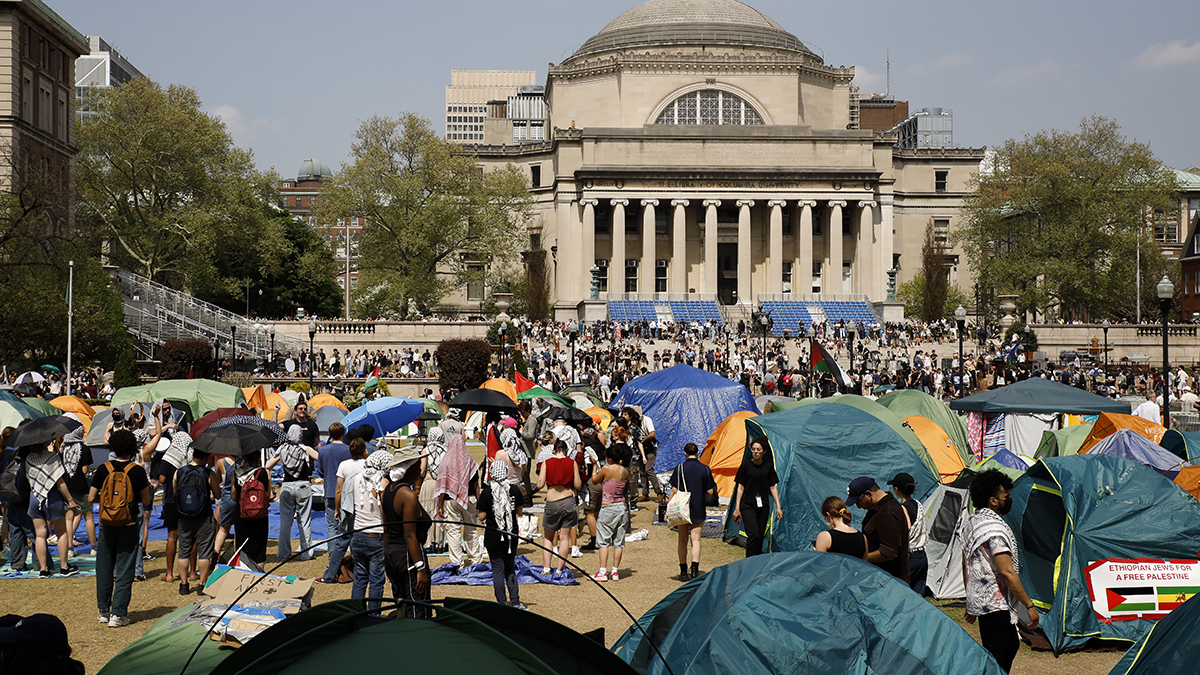What to Know
- A magnitude 4.8 earthquake struck New Jersey and parts of New York on Friday morning.
- A magnitude 1.7 earthquake hit Astoria, Queens and Roosevelt Island earlier in January.
- Earthquakes have no seasonality and can occur at any time, but mornings and evenings are more likely to see a strike, according to the USGS.
New Jersey and New York City dwellers were abruptly shaken Friday morning by an escalating, rumbling vibration. It was the second time this year that an earthquake struck the region, triggering panicking phone calls from Manhattan to Albany to Long Island, Montclair and Brooklyn.
An earthquake is usually a foreign experience to New Yorkers, and it naturally sounded the alarms with the minds jumping to the worst possible conclusions. However, it was just nature running its course and experts say residents may need to be more prepared for the future.
The Northeast region has experienced over 2,000 recorded quakes since the 1700s, according to the National Earthquake Information Center. The one in New Jersey on Friday was magnitude 4.8 and didn't cause major damage. So far, there have only been 13 quakes in the area that were deemed "damaging" by the center.
Get Connecticut local news, weather forecasts and entertainment stories to your inbox. Sign up for NBC Connecticut newsletters.
New York City felt another quake earlier this year. The United States Geological Survey (USGS) reported a magnitude 1.7 earthquake near Astoria, Queens in January.
Earthquakes are a result of pressure released in the form of seismic waves from fault lines, or fractures in the Earth's crust. Fault lines are caused by the sliding of the planet's outer shell, or tectonic plates, which are always moving, but at times, get stressed and undergo friction resulting in an energy release, or quake.
Earthquakes have no seasonality and can occur at any time, but mornings and evenings are more likely to see a strike, according to the USGS.
U.S. & World
Dr. Antonios Marsellos, an associate professor in the Department of Geology, Environment, and Sustainability at Hofstra University, explained that even though New York is sitting on a specific type of plate, earthquakes do happen.
"An earthquake is based on tectonic plates, and New York is sitting on a 'lazy' plate, which is good, meaning we do not have so many earthquakes, but there are other things that happen -- too much rain or drought," Dr. Marsellos told NBC New York.
Long periods of flooding can cause water levels to rise leading to possible landslides. Those slides can "lubricate" faults and may account for a higher frequency of quakes, explained Dr. Marsellos.
The truth is that this phenomenon is happening all the time around the world. The National Earthquake Information Center pinpoints approximately 20,000 earthquakes internationally each year and about 55 per day.
"The planet that we live on is constantly moving, although very slowly. The Earth has a large mantle that connects all the way from the surface down to the liquid iron core, and that convection is driving motions at the surface that lead to earthquakes wherever the rocks are sufficiently brittle," Jeffrey Park, professor of Earth and Planetary Sciences at Yale University, explained what is behind these occurrences.
Large earthquakes occur at fault zones, or areas of fracture in the Earth's crust, where the rock will break. Most dangerous fault areas are on the West Coast, including California and Washington state.
Dr. Park indicated the continuous rise in sea levels can increase the amount of pressure exerted on the Earth's shelves and coastlines, resulting in mostly scattered and infrequent quakes with long lead times.
The positive takeaway is that experts say there is no need to be alarmed and no elevated quake is expected any time soon.
"I wouldn't worry about it too much. The East Coast has been geologically stable for millions of years," said Dr. Stephen Holler, an associate professor of Physics at Fordham University.
The USGS states there are 16 major earthquakes in any given year with a range between magnitude 7 and 8. The government's agency records show over the past five decades that the long-term average number of major earthquakes has exceeded about a dozen times.



